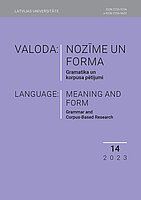Critical discourse analysis of hate speech from a linguistic perspective
Critical discourse analysis of hate speech from a linguistic perspective
Author(s): Indra Karapetjana, Gunta Rozina, Margarita SpiridaSubject(s): Semantics, Sociolinguistics, Sociology of Culture, Sociology of Politics, Stylistics
Published by: Latvijas Universitātes Akadēmiskais apgāds
Keywords: hate speech; critical discourse analysis; discursive proximization;
Summary/Abstract: The present study is concerned with the analysis of hate speech – an offensive discourse, which is harmful to democracy and to the members of targeted groups and/or individuals, whose inherent characteristics or public image is threatened. It seems reasonable to assume that the democratic and peace-loving world has been astounded by the offensive language often used by Hungarian Prime Minister Viktor Orbán, a NATO leader and a representative of a European Union (EU) member state. Therefore, a speech by Hungarian Prime Minister V. Orbán (2022) delivered at the Bálványos Free Summer University and Student Camp on 23 July 2022, with an approximate research corpus of 9 000 words, has been selected as an object of the linguistic study. This speech has been referred to as a “racist tirade” (Coakley 2022), and European Parliament political group leaders have condemned his “openly racist declarations”, breaching the EU values (EU Parliament Press Room 2022), to mention but a few reactions to the speech. This is even more alarming at present in the context of Russia’s war against Ukraine, when Prime Minister V. Orbán’s pro-Russian stance subverts the EU’s fundamental values and hinders the EU decision-making process. The study employed InfraNodus and Wmatrix methodology for the thematic analysis, the analysis of keyness at the word, part of speech and semantic domain level focusing on the three aspects of discursive proximization that provide for the discussion on the ideological schism in the discourse space. The results of a micro-linguistic level study of the speech indicate that from the perspective of its form, the hate speech under analysis demonstrates Prime Minister V. Orbán’s rather uncompromising stance towards the events being referred to, as well as his attitude towards the prospective action, which might be taken by the target audience. As a result, the qualitative research findings demonstrate that the hate speech under analysis exhibits the features of offensive discourse, created by means of context-dependent linguistic realizations.
Journal: Valoda: nozīme un forma
- Issue Year: 2023
- Issue No: 14
- Page Range: 74-90
- Page Count: 17
- Language: English

